Plants taking pot shots at passers by is obviously a fanciful idea. Nevertheless, there is a plant, known as the purple toothwort (Lathraea clandestina), that could be described as a botanical sharpshooter.
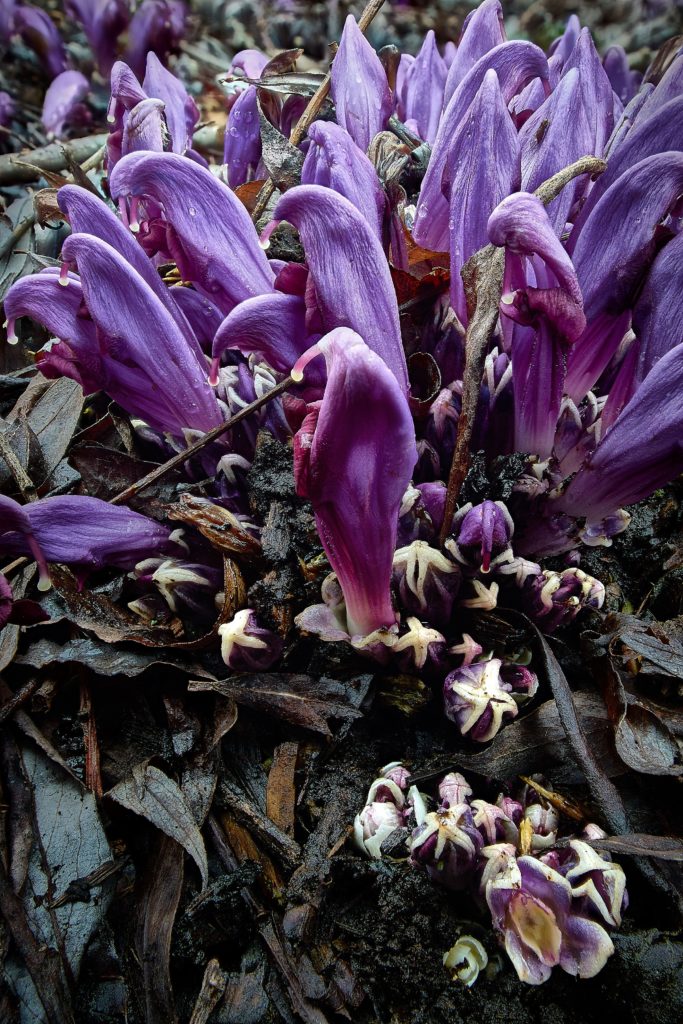
Purple toothwort seeds are rather large at 5mm across (about the size of a green lentil) and each pod contains several. What’s so surprising about this plant is that the seeds are fired out of the pod at high velocity. If you are standing nearby when the pods discharge you can hear a pop and if the seeds strike you at close range you will know about it. The plant can eject seeds over a distance of 8m, so beware of being caught in the crossfire between patches.
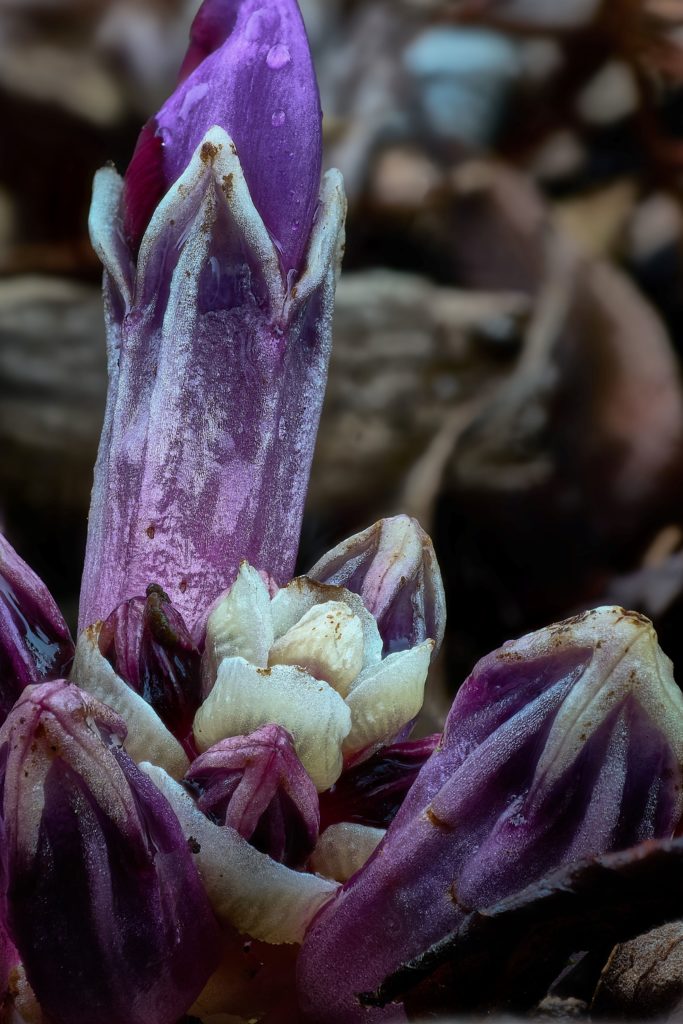
The Botanics has clumps of this unusual parasitic plant in various places near the Willow Pond not far from the East Gate. It appears to be spreading and is often found to parasitise willow and alder and, like these host plants, prefers wetter ground. However, it is known to be quite happy to grow on a wide range of plants. It appears to have been introduced to Britain from the continent in 1888 and has spread quite widely. The Lothians are a particular hotspot for purple toothwort, with many populations, often in river valleys.
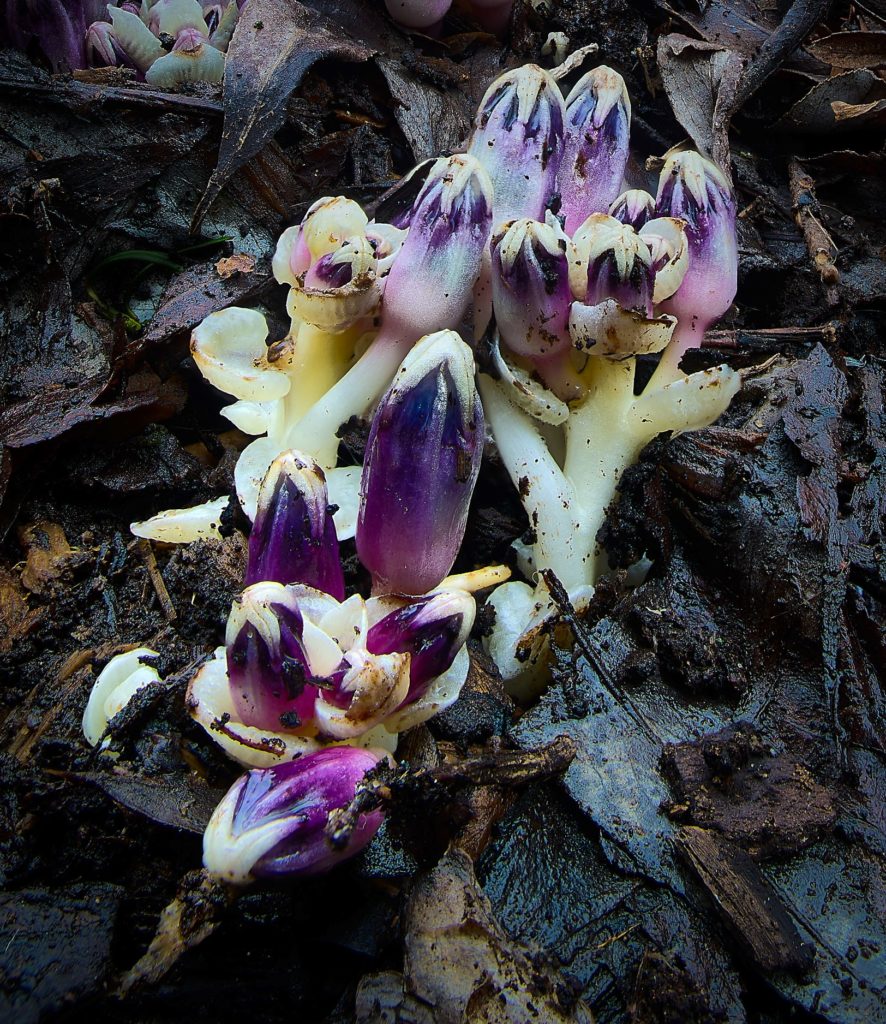
I’m not aware of any images that show the seeds in mid air as they leave the pods, so I wanted to see if this moment could be captured. Clearly, this is specialist photography that requires a very high shutter speed and flash lighting. Working with Francis Principe-Gillespie, we have managed to do what seemed impossible and freeze-framed the seeds as they leave the pod, possibly for the first time.
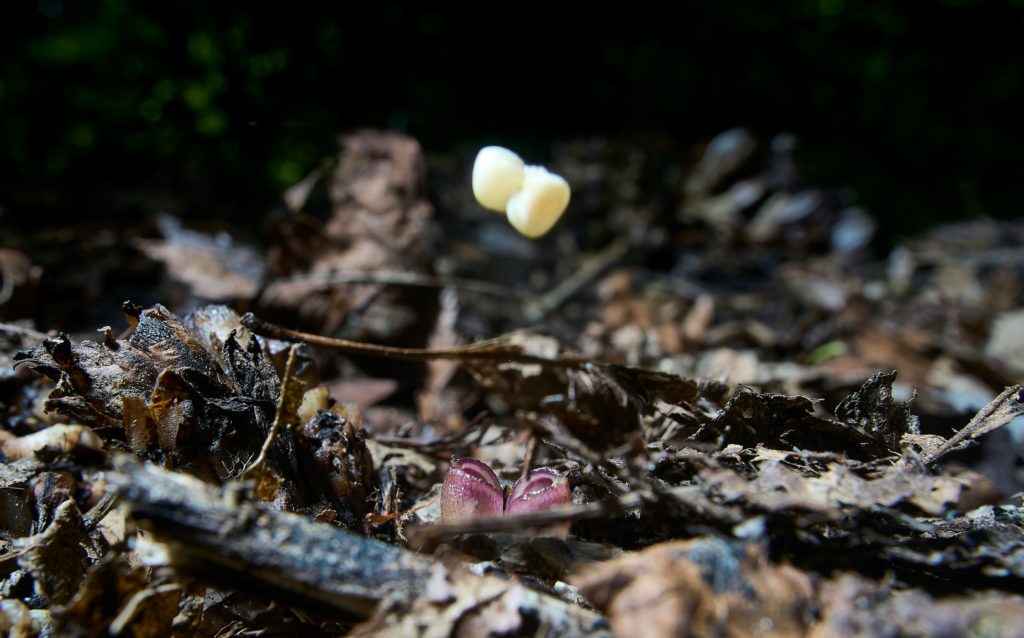
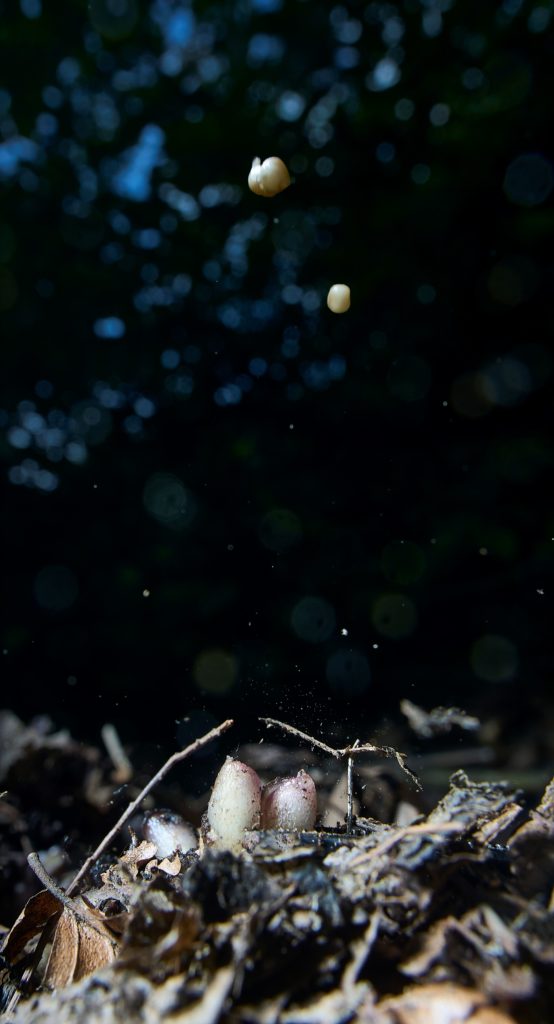
Not only is this plant a vampire and a sharpshooter, but it has nectar laced with ammonia to deter birds and other animals that would not provide pollination services, due to so-called nectar robbing. The bumblebees, particularly the larger queens, that are the target pollinator for this plant seem to be unperturbed by the ammonia-rich nectar. This is a nice example of one way in which a plant can control who gets the food reward in return for acting as an effective pollen delivery service. Plants are not the passive partners they seem and they actually control animals in very precise ways.
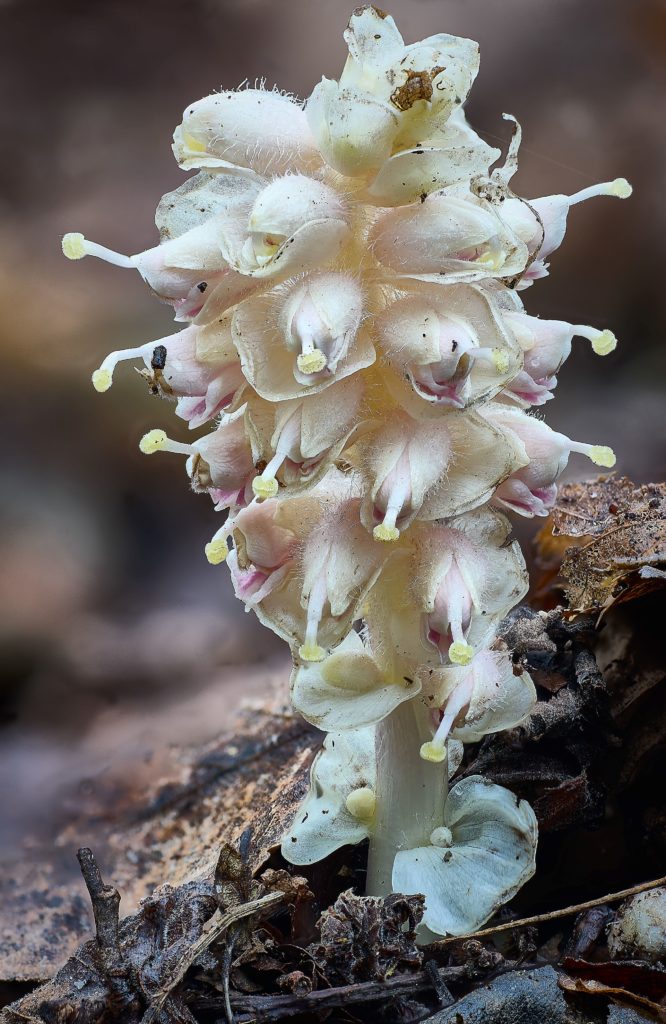
The Botanics is also host to the rather uncommon native relative of the introduced purple toothwort. This native plant is simply called toothwort (Lathraea squamaria) and is pinkish-white in colour. It is normally parasitic on hazel and does not have the seed-firing ability of its continental cousin.
For more background on purple toothwort there are two recent articles on it in the Botanical Society of Scotland regular blog series called Plant of the Week. Richard Milne explores the native toothwort and the evolution of parasitism, with some mention of purple toothwort, here. Chris Jeffree takes a closer look at the biology of purple toothwort and its local distribution in the Lothians here.
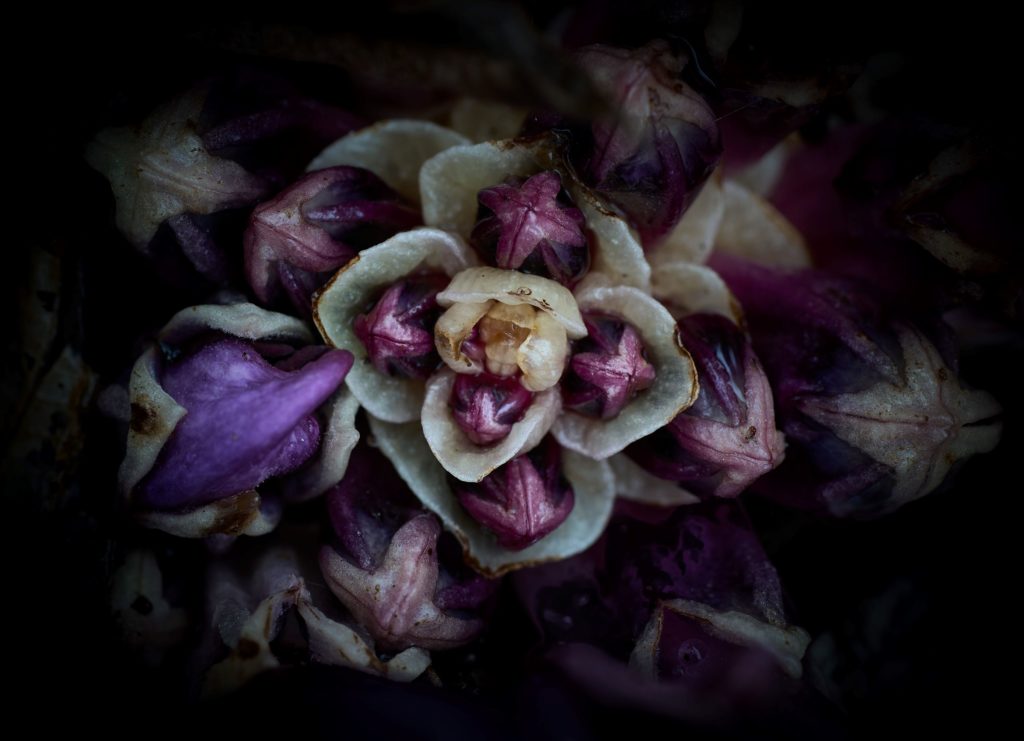
Acknowledgement: Thanks to Francis Principe-Gillespie for being up for the challenge of trying to photograph high velocity seeds and for devising a method that made it possible. All images in this post have been taken by Francis and he advised on the technical note below.
Technical footnote: The speed of travel of the seeds as they leave the pod is so great that they are effectively invisible to us. Our brains cannot process the information quickly enough. To be able to see the action we need high shutter speeds to freeze-frame the seed in mid-air. Each frame in standard video captures 1/24th of a second and at this frame rate the seed will appear as a line across a single frame. Use of shutter speeds above 1/1,000th of a second (a millisecond) makes it possible to see the seed, but even then it is unlikely to be captured in focus. Faster speed is necessary, so the use of a strobe/flash is essential in reducing the effective exposure to the region of 70 – 100 microseconds (equivalent to 1/70 – 100,000th of a second). Further complication arises from the random direction of the launched seed, especially if it is not the correct distance from the lens. The narrow plane of focus in many photographic images means that objects in front of and behind this plane will be out of focus. The position of the seed in space cannot be predicted, so it is impossible to set the focus correctly. Having the patience to retake the image until the seed is in the right position, by sheer good luck, is essential.
